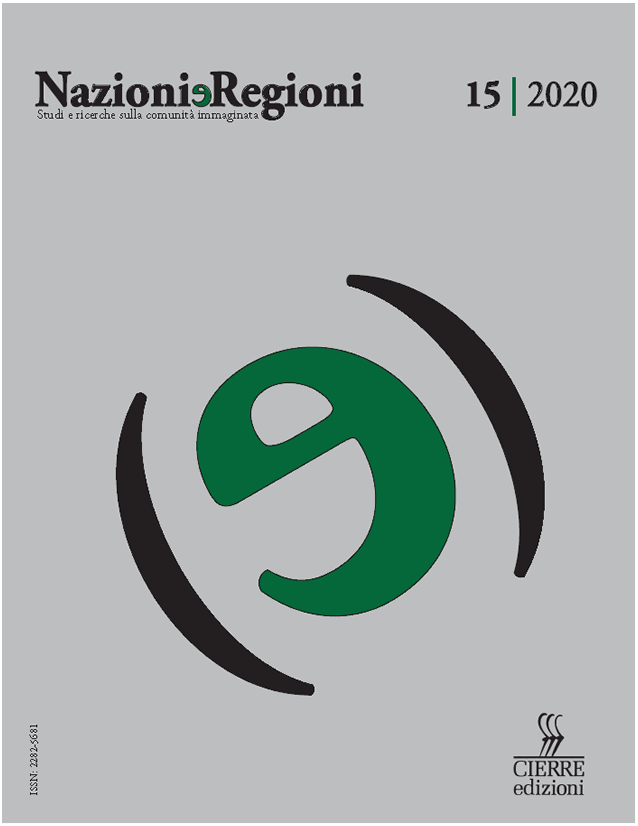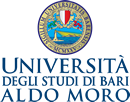La nazionalizzazione della cultura<br><br>The nationalization of culture
DOI:
https://doi.org/10.15162/2282-5681/1363Parole chiave:
costruzione della nazione, nazionalismo svedese, cultura nazionale, antropologia, etnografia, nazionalismo quotidiano, nation-building, Swedish nationalism, national culture, anthropology, ethnology, everyday nationalismAbstract
Sebbene il nazionalismo costituisca una forza culturale che è riuscita a prendere il sopravvento su altre identità e affiliazioni tradizionali della società ottocentesca e novecentesca, lo studio del nazionalismo non si è concentrato molto sulla prassi culturale della formazione e della condivisione dell‟identità nazionale. Di conseguenza, si sa molto di più dell‟ideologia e delle politiche del nazionalismo che non della creazione dell‟ungheresità o della svedesità. Questo articolo prende in esame alcuni approcci alla costruzione della cultura nazionale nella vita quotidiana, facendo ricorso principalmente ad esempi riferiti alla Svezia. Un altro oggetto di interesse è la cultura nazionale, vista come campo di battaglia in cui gruppi di interesse diversi utilizzano argomenti riguardanti l‟unità nazionale o il patrimonio culturale nazionale nell loro lotte per l‟egemonia. Vengono esaminati diversi tipi di “processi di nazionalizzazione”, ad esempio i modi in cui certe sfere culturali finiscono per essere definite nazionali, come lo spazio nazionale venga trasformato in spazio culturale, o il modo in cui ogni nuova generazione non solo venga nazionalizzata all‟interno di un determinato patrimonio culturale, ma crei anche la propria versione di un comune ambito di riferimento nazionale.
Although nationalism is an example of a cultural force which in many cases has overruled other, traditional identities and loyalties in 19th and 20th century society, the study of nationalism has not been focused very much on the cultural praxis of national identity formation and sharing. As a result, the ideology and politics of nationalism are far better understood than the creation of Hungarianness and Swedishness. This paper discusses some approaches in the national-culture building of everyday life, using mainly Swedish examples. The focus is also on national culture as a battle arena, where different interest groups use arguments about national unity or heritage in hegemonic struggles. Different types of “nationalization processes” are discussed, as for example ways in which certain cultural domains come to be defined as national, how national space is transformed into cultural space, or the way in which every new generation not only is nationalized into a given heritage but also creates its own version of a common, national frame of reference.
Riferimenti bibliografici
Agulhon M. (1981), Marianne into Battle: Republican Imagery and Symbolism in France 1789-1880, Cambridge University Press, Cambridge.
Agulhon M. (1987), «La Fabrication de la France: problèmes et controverses», in Anthropologie Sociale et Ethnologie de la France. Colloque du Centre d’ethnologie française et du Musée national des arts et traditions populaires, Mimeograph, Paris.
Anderson B. (1996), Comunità immaginate: origini e diffusione dei nazionalismi, trad. it. di M. Vignale, prefazione e cura di M. D’Eramo, Manifestolibri, Roma [1983].
Benedict B. (1983), The Anthropology of World’s Fairs. San Francisco’s Panama Pacific International Exposition of 1915, Scholar Press, London.
Berggreen B. (1989), Da kulturen kom till Norge, Aschehoug, Oslo.
Björnstad A. (1976), «Svenska flaggans bruk», Fataburen, pp. 43-56.
Braudel F. (1986-1988), L’identità della Francia, 3 voll., trad. it. di G. Ferrara degli Uberti, M. Botto e A. Caizzi, Il Saggiatore, Milano [1986-1987].
Colls R. – Dodd Ph. (eds.) (1986), Englishness: Politics and Culture 1880-1920, Croom Helm, Beckenham.
Crump J. (1986), «The Identity of English Music: The Reception of Elgar 1898-1935», in Colls R. – Dodd Ph. (eds.), Englishness: Politics and Culture 1880-1920, Croom Helm, Beckenham, pp. 164-190.
Csepeli G. (s. d.), «The Social Construction of National Identity in Contemporary Hungary», Paper presented at the seminar National culture as process: Hungarian and Swedish experiences, Budapest, 1-3-V-1989.
Daun Å. – Ehn B. (1988), Blandsverige, Carlsson, Stockholm.
Ehn B. (1983), Ska vi leka tiger? Daghemsliv ur kulturell synvinkel, Liber, Malmö.
Elias N. (1982), Il processo di civilizzazione. La civiltà delle buone maniere, trad. it. di G. Panzieri, Il Mulino, Bologna [1939].
Eliot T. S. (1967), Appunti per una definizione della cultura, trad. it. di G. Manganelli, Bompiani, Milano [1948].
Firth R. (1977), I simboli e le mode, trad. it. di R. Simone e D. Cannella Visca, Laterza, Roma-Bari [1973].
Frykman J. – Löfgren O. (1987), Culture Builders: A Historical Anthropology of Middle-class Life, Rutgers University Press, New Brunswick.
Furuland L. (1987), «‘Lyssna till den granens susning…’ Om en läsebok somfolkuppfostrare», in Kungl. Vitterhets Historie och Antikvitets Akademiens Årsbok, pp. 1-15.
Gellner E. (1985), Nazioni e nazionalismo, trad. it. di M. Lucioni, Editori Riuniti, Roma [1983].
Hannerz U. (s. d.), «American Culture: Creolized, Creolizing», Paper presented at the Nordic Association for American Studies, Uppsala.
Harbsmeier M. (1986), «Danmark: Nation, kultur og køn», Stofskifte, n. 13, pp. 47-74.
Herzfeld M. (1982), Ours Once More: Folklore, Ideology and the Making of Modern Greece, University of Texas Press, Austin.
Herzfeld M. (1987), Anthropology through the Looking Glass: Critical Ethnography in the Margins of Europe, Cambridge University Press, Cambridge.
Hirsch E. D. – Kett J. F. – Trefil J. (1987), Cultural Literacy: What Every American Needs to Know, Houghton Mifflin, Boston-New York.
Hobsbawm E. – Ranger T. (1994), L’invenzione della tradizione, trad. it. di E. Basaglia, Einaudi, Torino [1983].
Hofer T. (s. d.), «Constructing the Heritage of Hungarian Folk Culture: Symbolic Uses of Peasant Traditions», Paper presented at the seminar National culture as process: Hungarian and Swedish experiences, Budapest, 1-3-V-1989.
Honko L. (ed.) (1980), Folklore och nationsbygrande i Norden, NIF, Åbo.
Johannesson K. (1985), «Engelbrekt och upprorens retorik», Artes, n. 2, pp. 87-102.
Johansson E. (1987), «Vår stolta särprägel: Nationalism i svensk etnologi», Nord-Nytt, n. 30.
Kapferer B. (1988), Legends of People. Myths of State. Violence, Intolerance and Political Culture in Sri Lanka and Australia, Smithsonian Institution Press, Washington DC.
Karlsson H. (1988), O, ädle svensk! Biskop Thomas’ frihetssång i music och politik, Kungl. Musikaliska akademiens skriftserie, n. 59.
Lendvay J. (s. d.), «National Auto- and Hetero-stereotype Concerning Hungary and Hungarians», Paper presented at the seminar National culture as process: Hungarian and Swedish experiences, Budapest, 1-3-V-1989.
Linde-Laursen A. (s. d.), Fra u-land til storebror. Danskernes syn på svenskere og Sverige i det tyvende århundrede (manoscritto non pubblicato).
Löfgren O. (1985), «Kring nationalkänslans kulturella organisation», Nord-Nytt, n. 25, pp. 73-85.
Löfgren O. (1986), «Deconstructing Swedishness: Class and Culture in Modern Sweden», in Jackson A. (ed.), Anthropology at Home, Tavistock, London.
Löfgren O. (1987), «Om behovet for danskhed», Hug, n. 47, pp. 49-55.
Löfgren O. (1987a), «Colonising the Territory of Historical Anthropology», Culture & History, n. 1, pp. 7-30.
Löfgren O. (1988), «Landscapes and Mindscapes», Folk, n. 31, pp. 183-209.
Löfgren O. (1991), «Medierna i nationsbygget», in Hannerz U. (ed.), Medier och kulturell forändring, Carlsson, Stockholm, pp. 85-120.
Marchand R. (1985), Advertising the American Dream: Making Way for Modernity 1920-1940, University of California Press, Berkeley CA.
Nordstedt J. F. (1985), I Sverige, Sthlm, Stockholm.
Oinas F. J. (ed.) (1978), Folklore, Nationalism and Politics, Slavica, Columbus.
Østergård U. (1988), Hva er en nationsstat?, Arbeijdspapir nr. 12, Center for Kulturforskning, Århus University, Århus.
Østerud Ø. (1986), «Nationalstaten Norge – en karakteriserende skisse», in Alldén L. et alii (eds.), Det norske samfunn, Gyldendal, Oslo, pp. 9-32.
Renan E. (1919), Che cos’è una nazione?, trad. it., L’eroica, Milano [1882].
Rosander G. (1986), «The Nationalization of Dalecarlia. How a Special Province Became a National Symbol for Sweden», Arv, n. 42, pp. 93-142.
Rosander G. (ed.) (1987), Turisternas Leksand, Leksand sockenbeskrivning, Malung.
Rydell R. W. (1984), All the World’s a Fair. Visions of Empire at American International Expositions, 1876-1916, University of Chicago Press, Chicago.
Schlesinger Ph. (1987), «On National Identity: Some Conceptions and Misconceptions Criticized», Social Science Information, n. 26, vol. 2, pp. 219-264.
Smeds K. (1983), «Finland på världsutställingen i Paris 1889», Historisk tidskrift för Finland, n. 2, pp. 81-102.
Smith A. D. (1998), Le origini etniche delle nazioni, trad. it. di U. Livini, Il Mulino, Bologna [1986].
Teleman U. (ed.) (1986), De nordiske skriftspråkenes utvikling på 1800-tallet, 3. Ideologier og språtskyring, Nordisk språksekretariats rapporter 7, Oslo.
Weber E. (1989), Da contadini a francesi: la modernizzazione della Francia rurale 1870-1914, trad. it. di A. Prandi, Il Mulino, Bologna [1976].
Whisnant D. E. (1983), All That Is Native and Fine: The Politics of Culture in an American Region, University of North Carolina Press, Chapel Hill.
Williams R. (1979), Marxismo e letteratura, trad. it. di M. Stetrema, Laterza, Roma-Bari [1977].
Wright P. (1985), On Living in an Old Country: The National Past in Contemporary Britain, Verso, London.
Downloads
Pubblicato
Fascicolo
Sezione
Licenza
Nazioni e regioni è una rivista open access che applica la licenza Creative Commons CC BY-NC-ND 4.0 a tutti i contenuti pubblicati.
Nazioni e regioni is an open-access journal that applies the Creative Commons CC BY-NC-ND 4.0 licence to all published contents.







